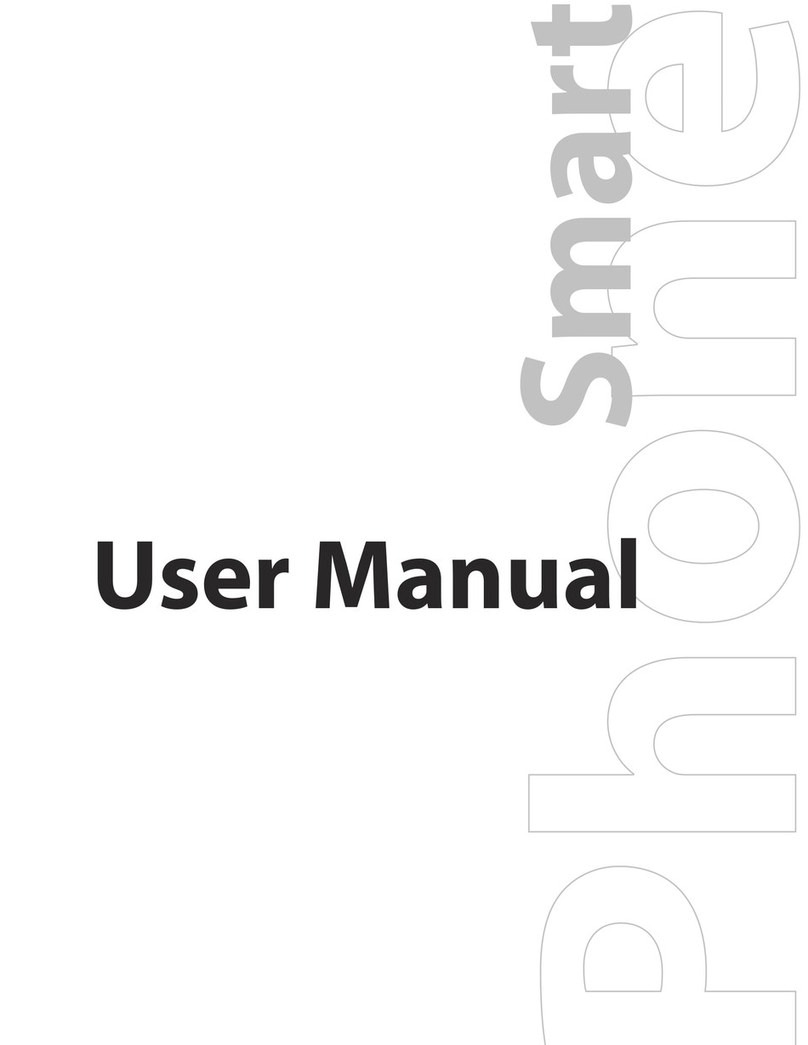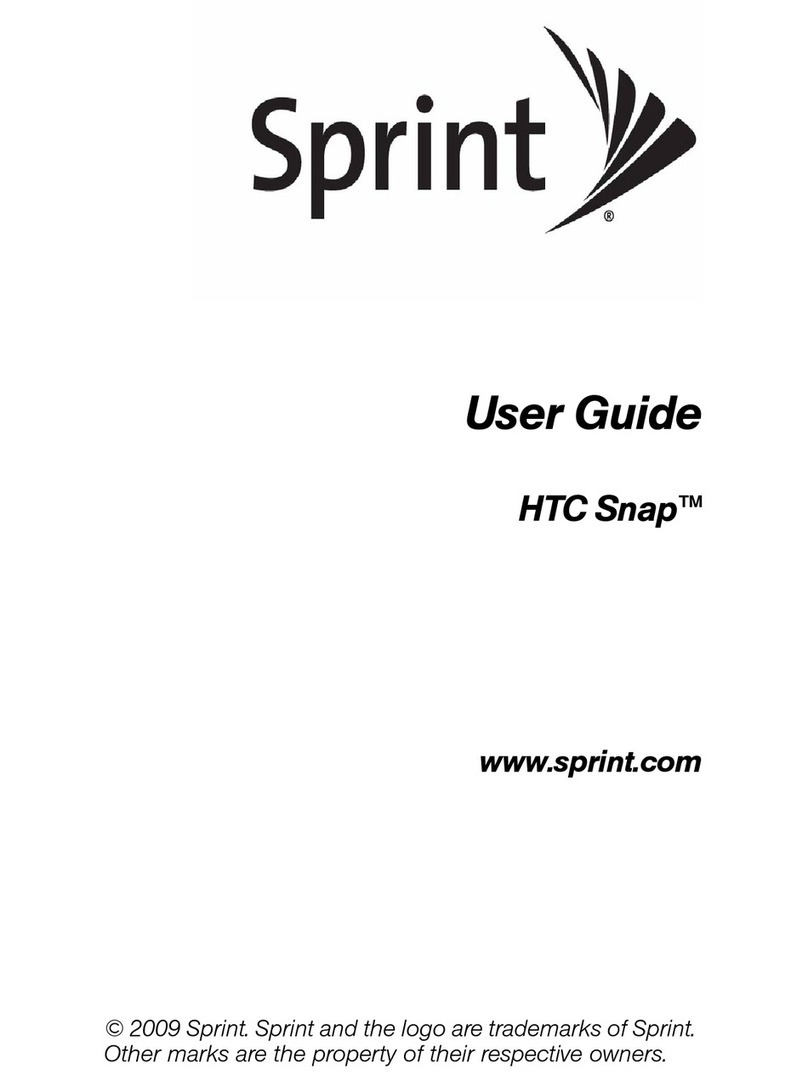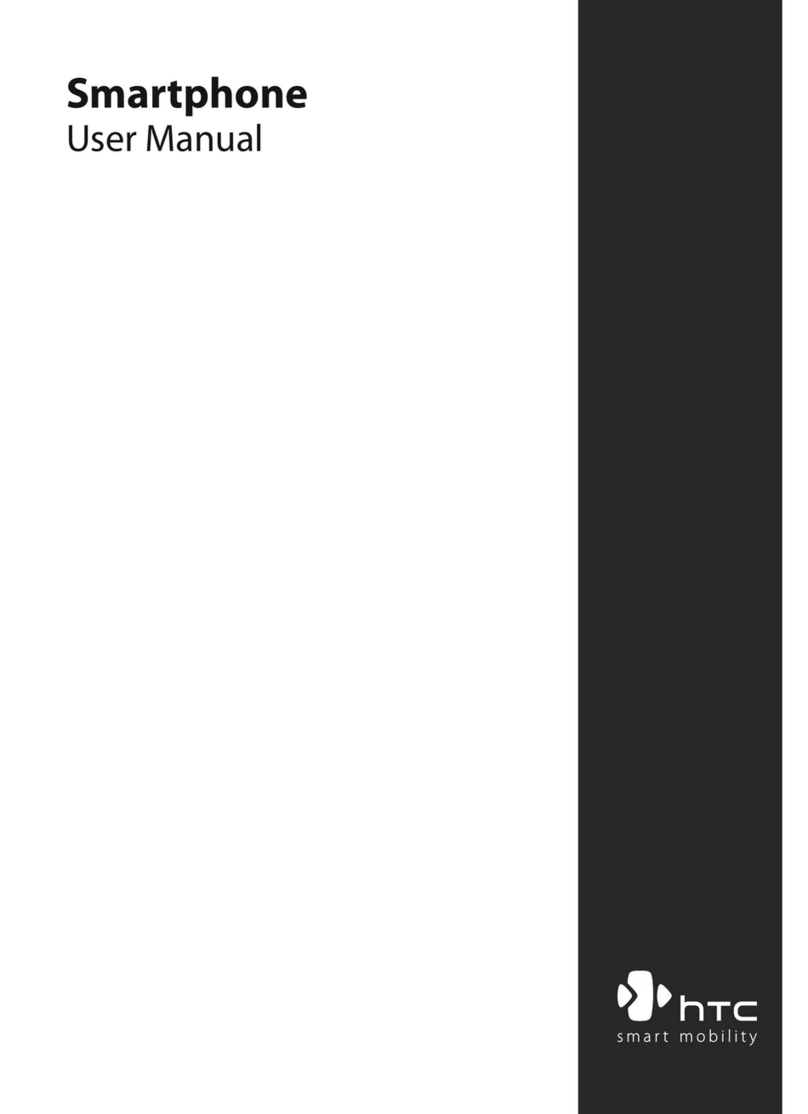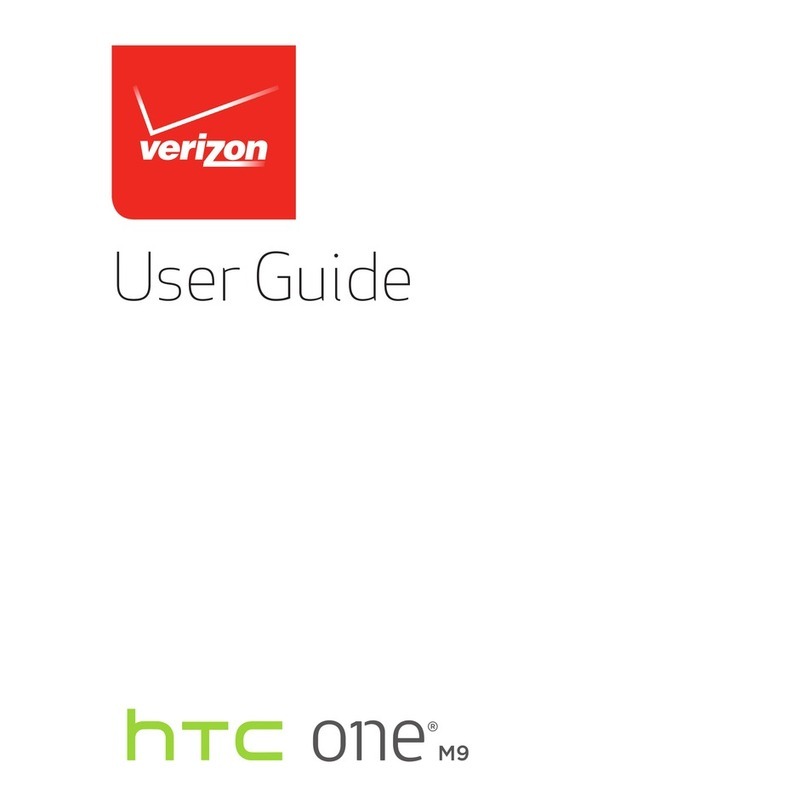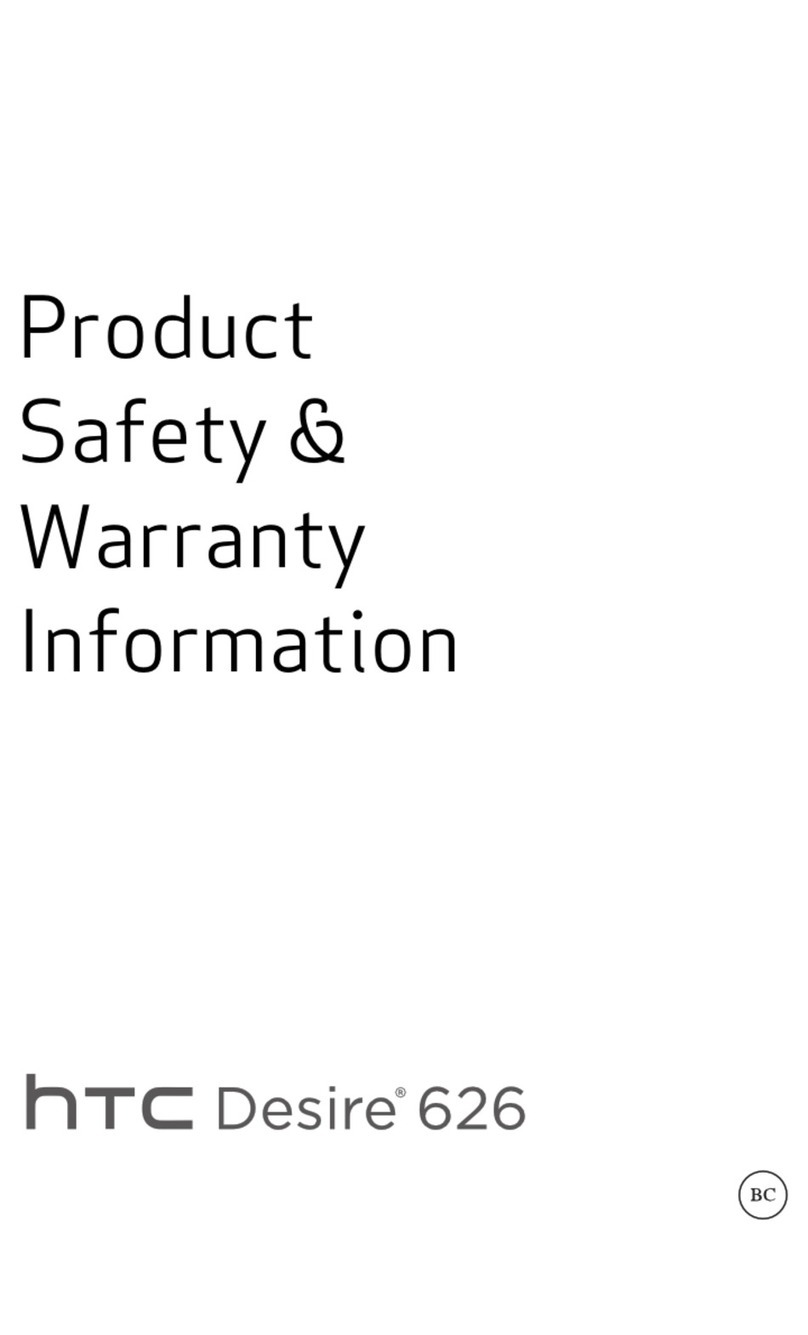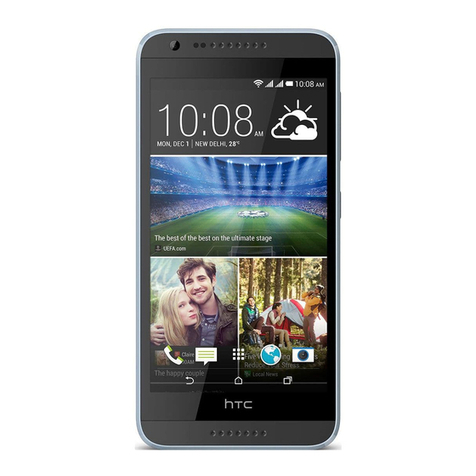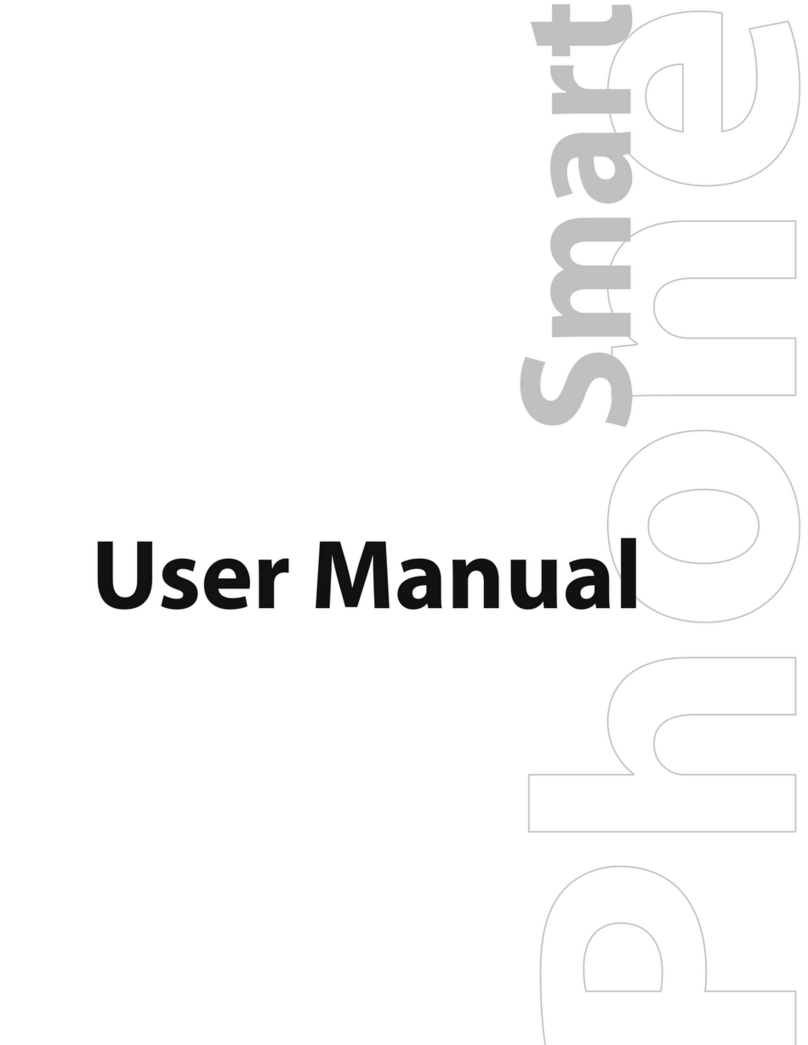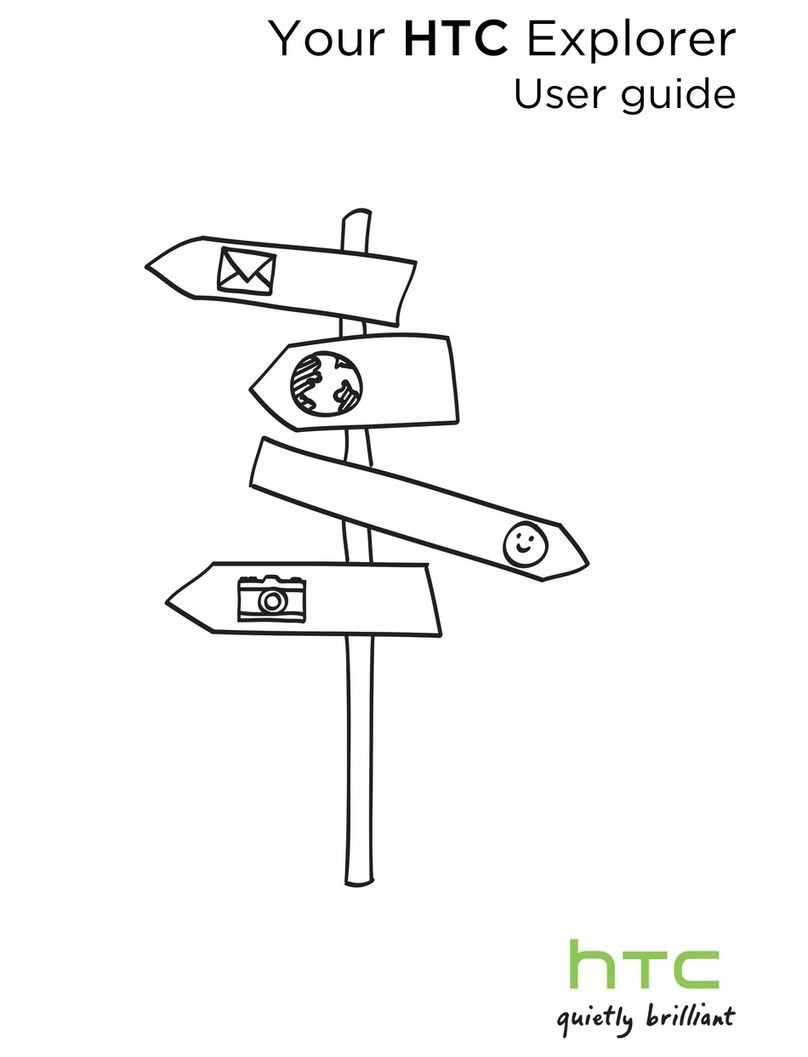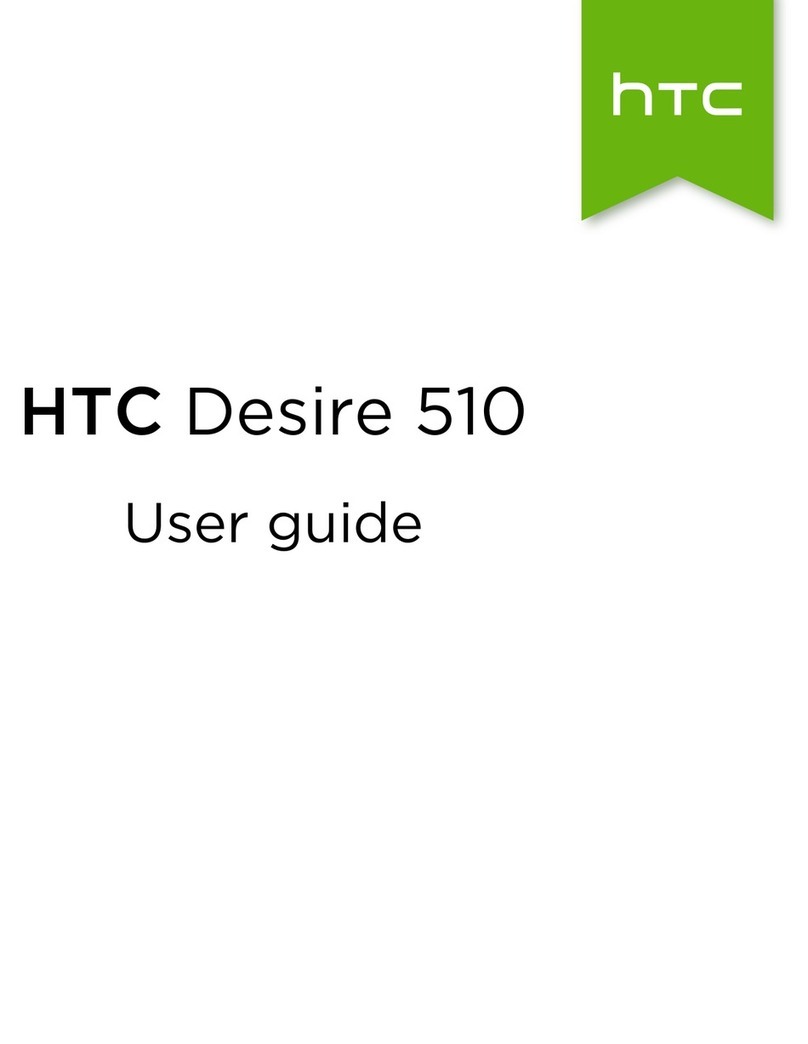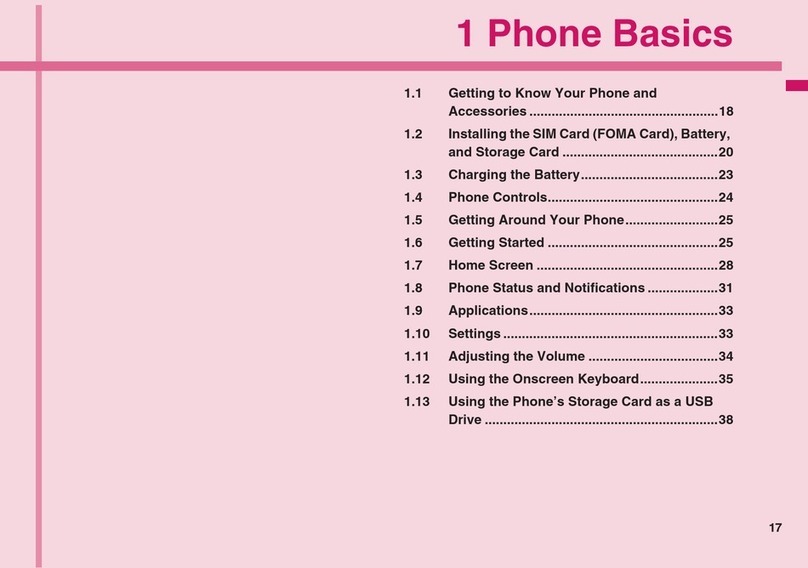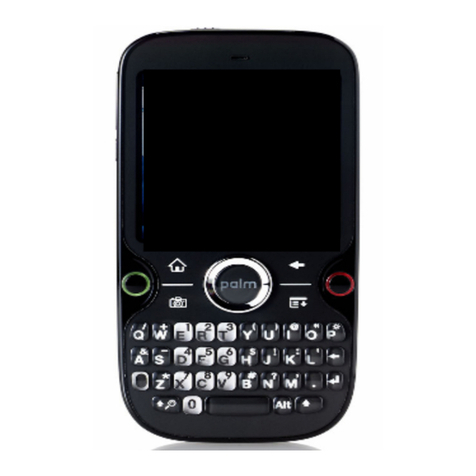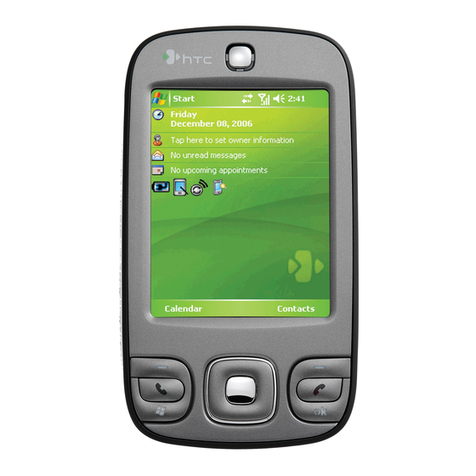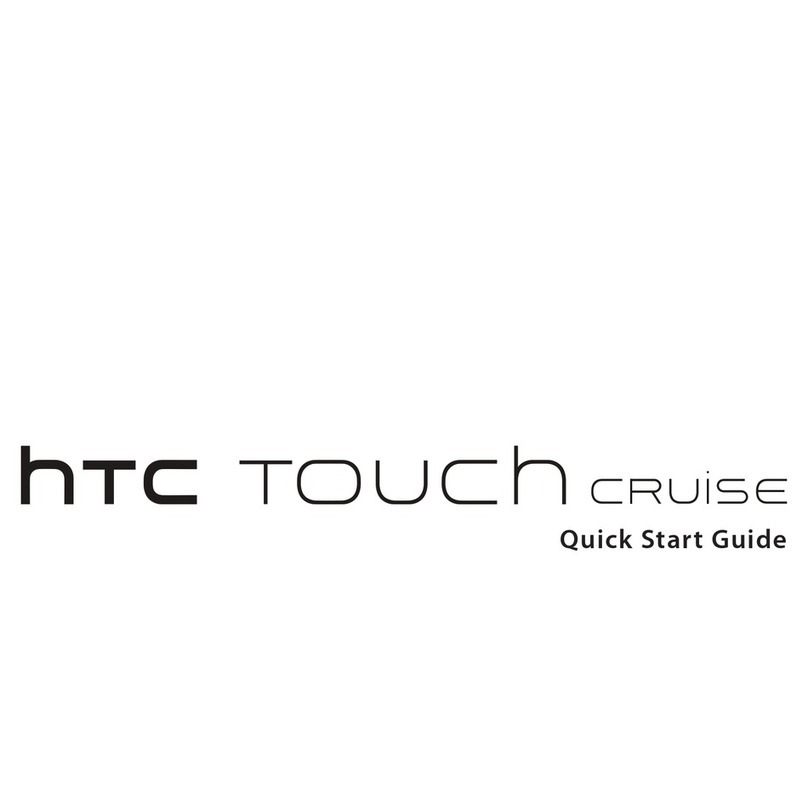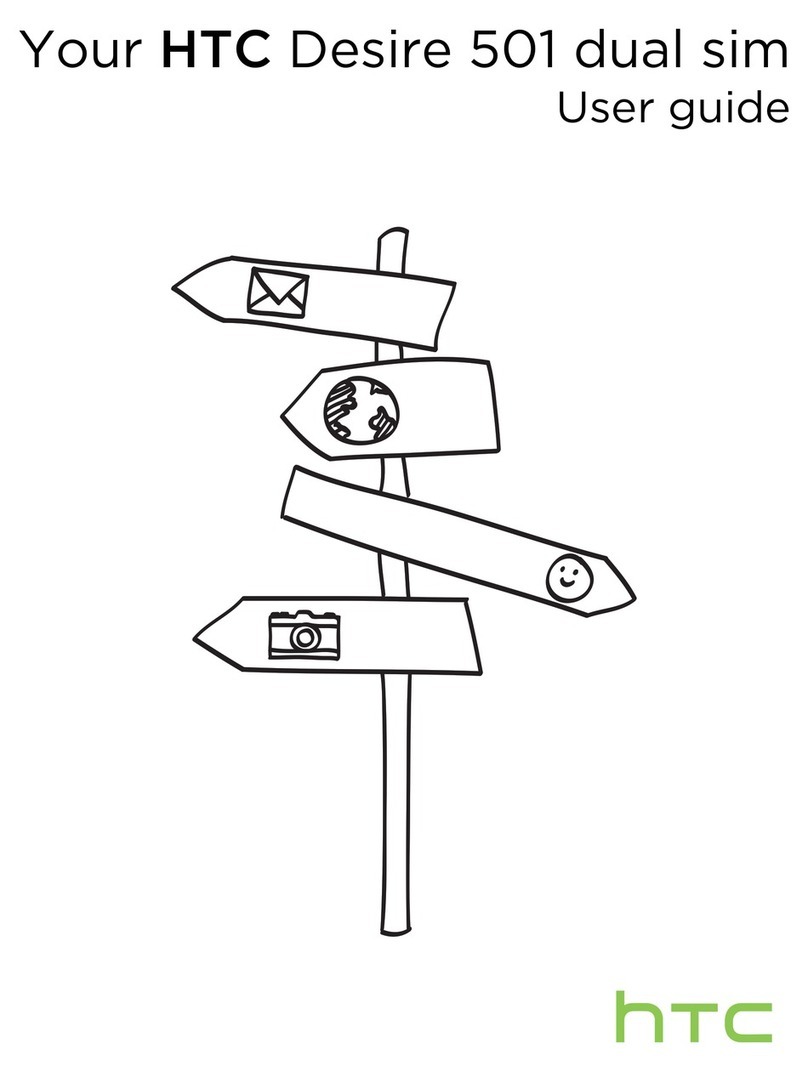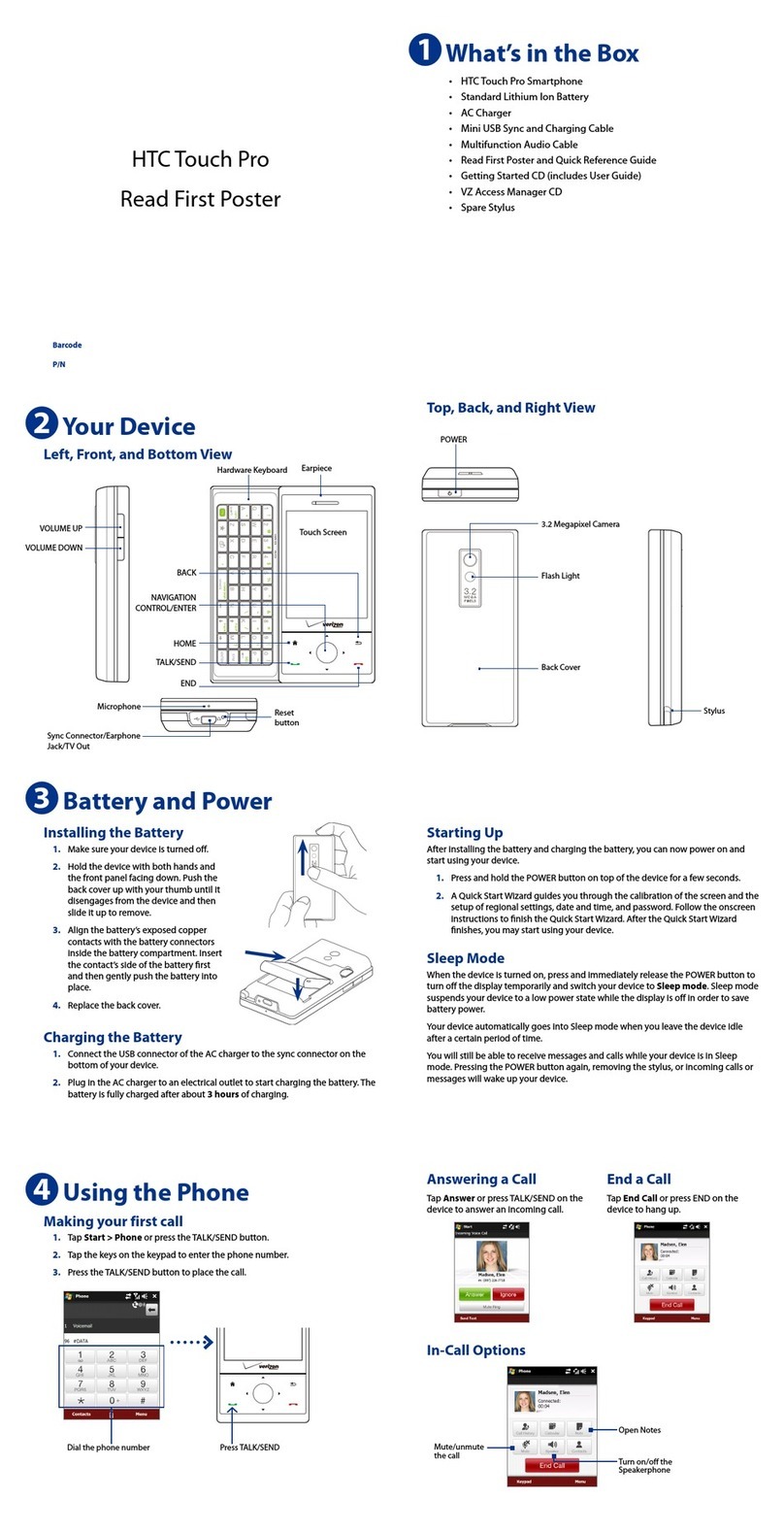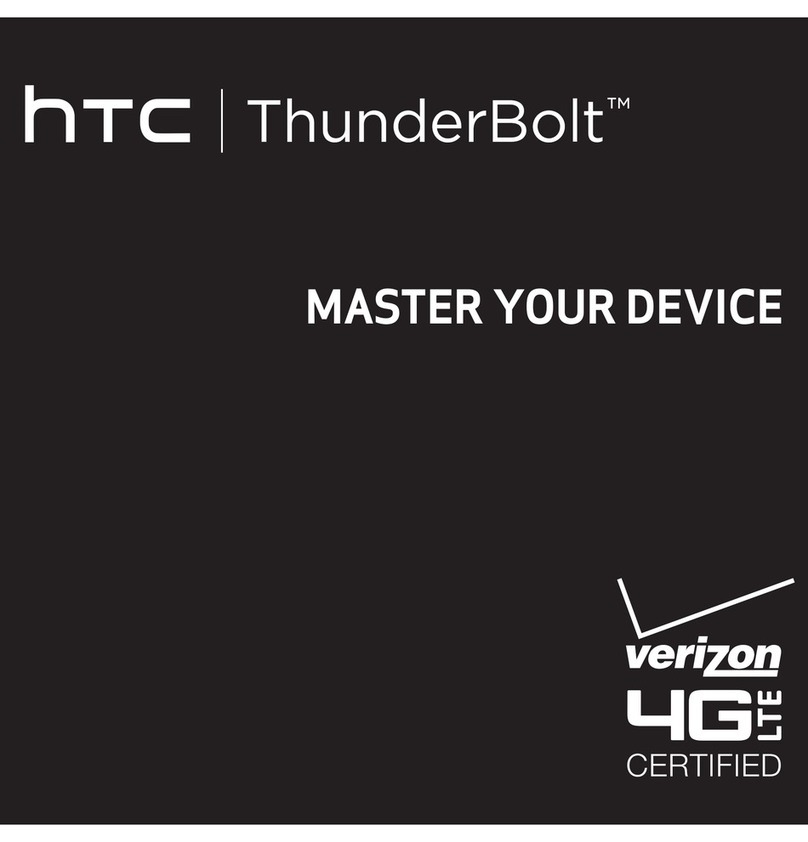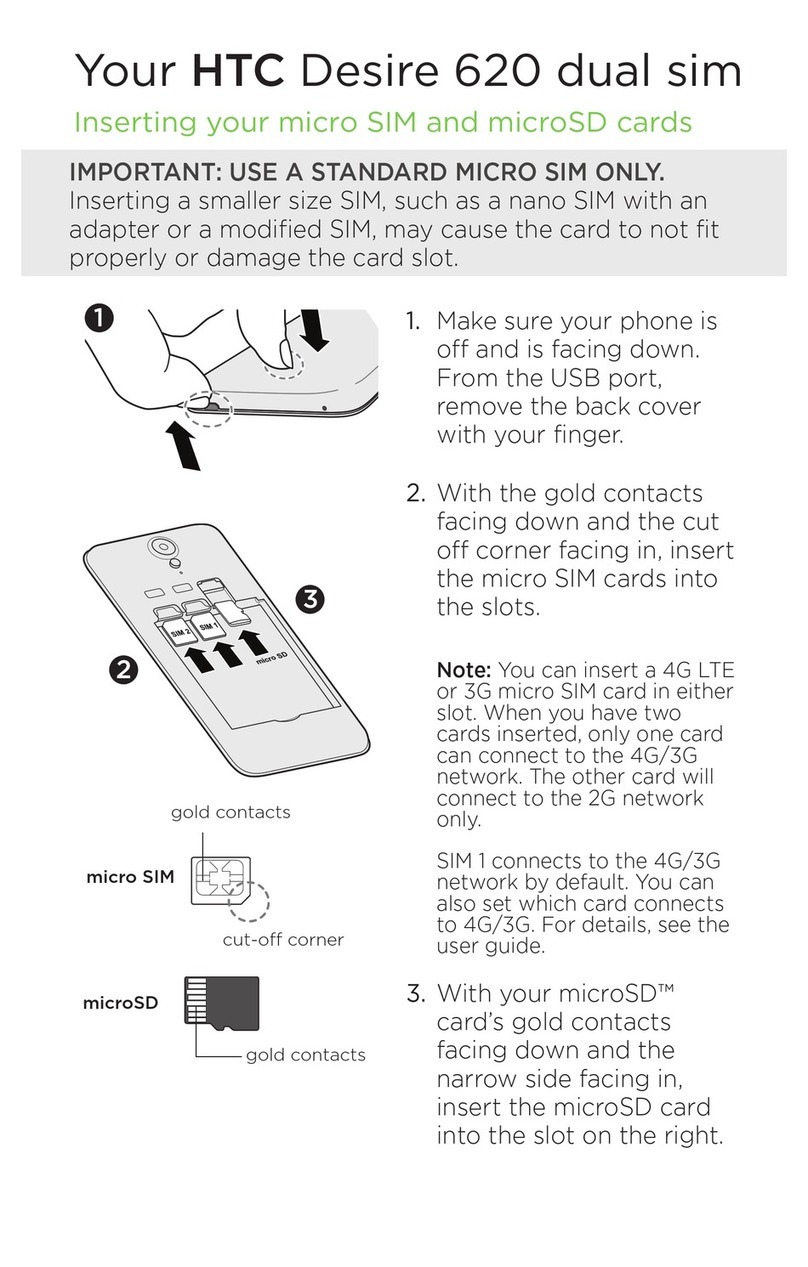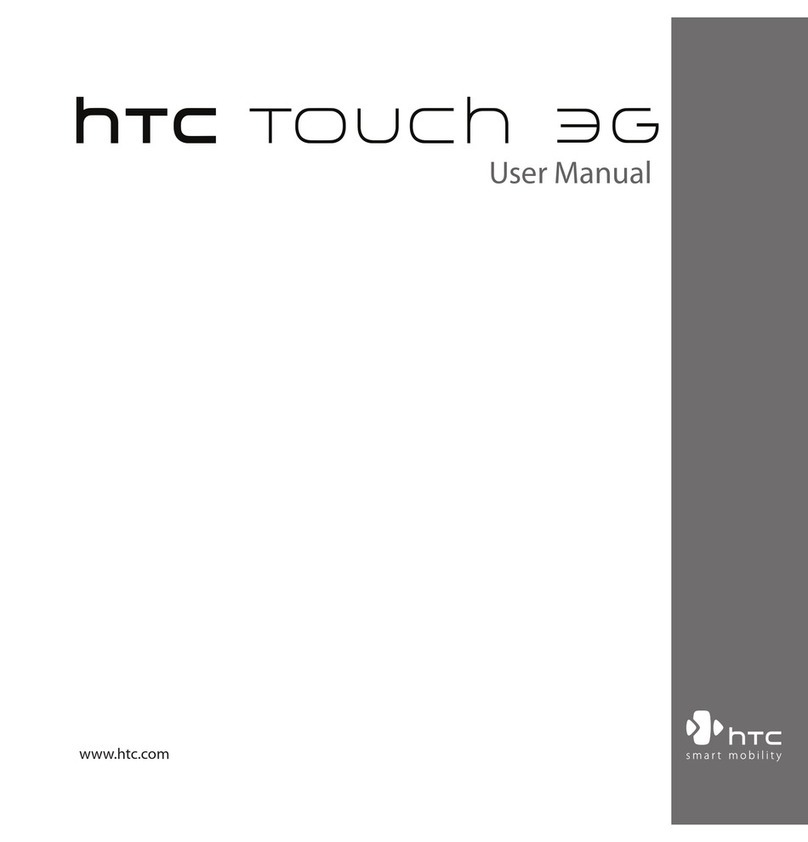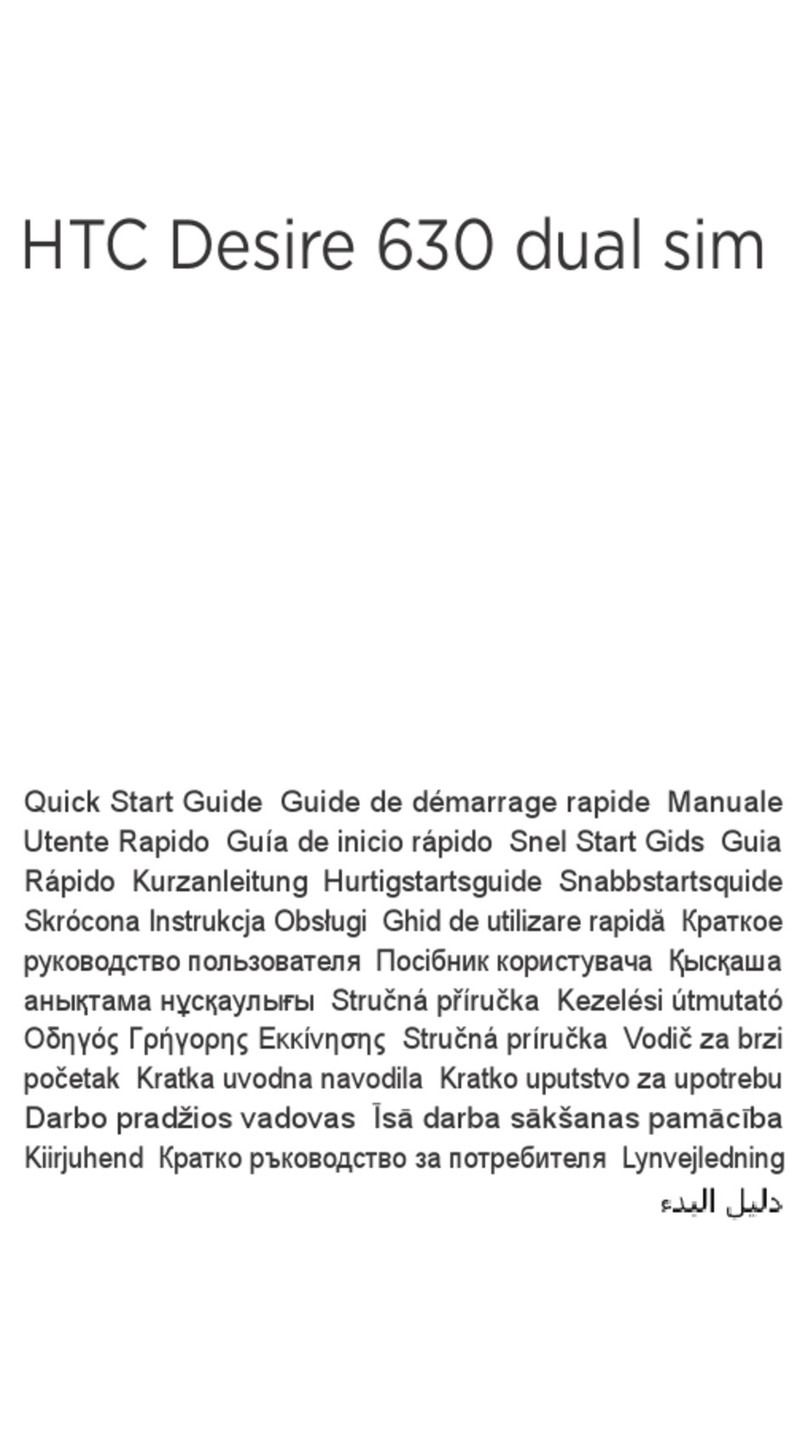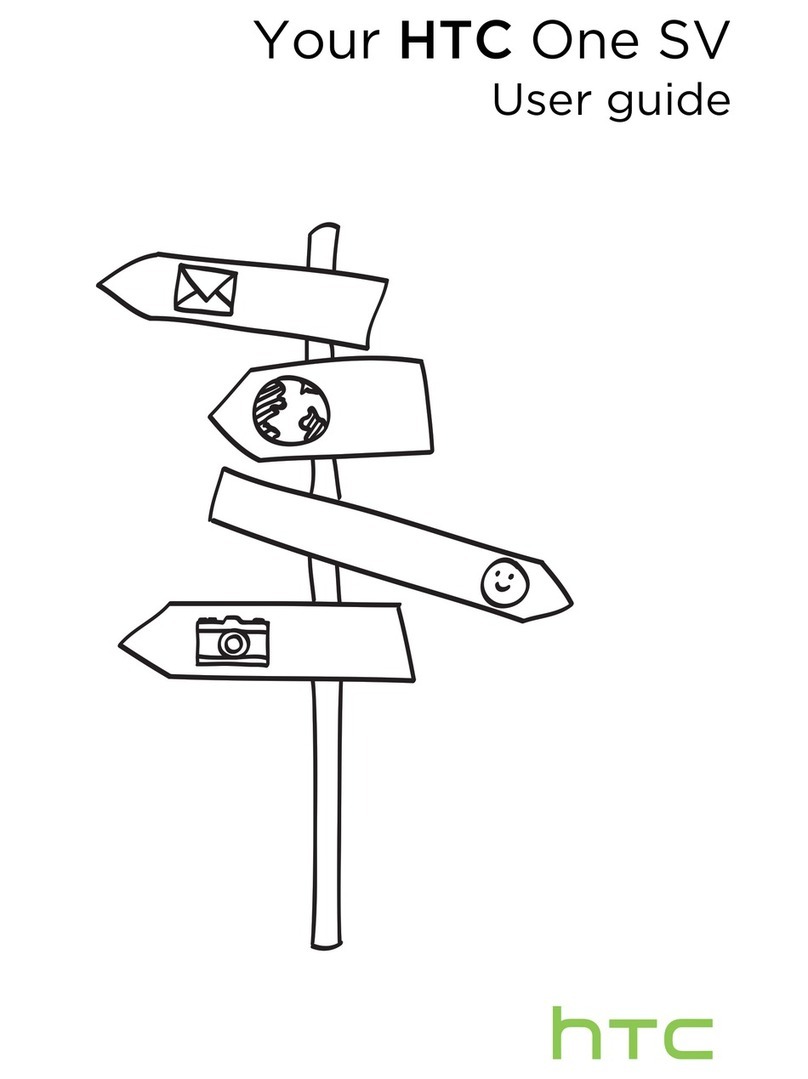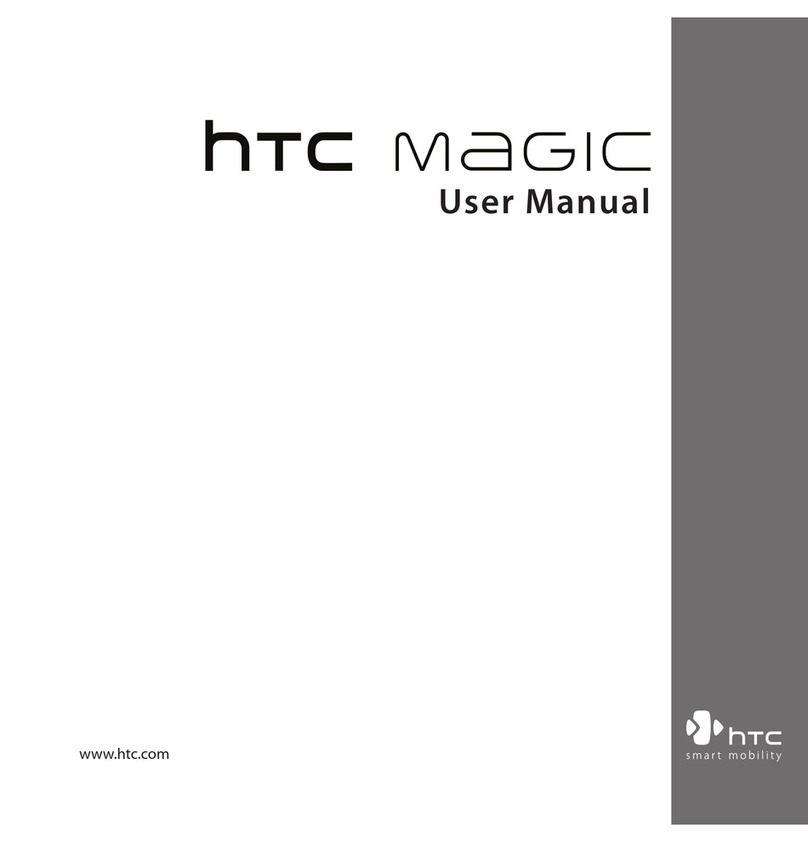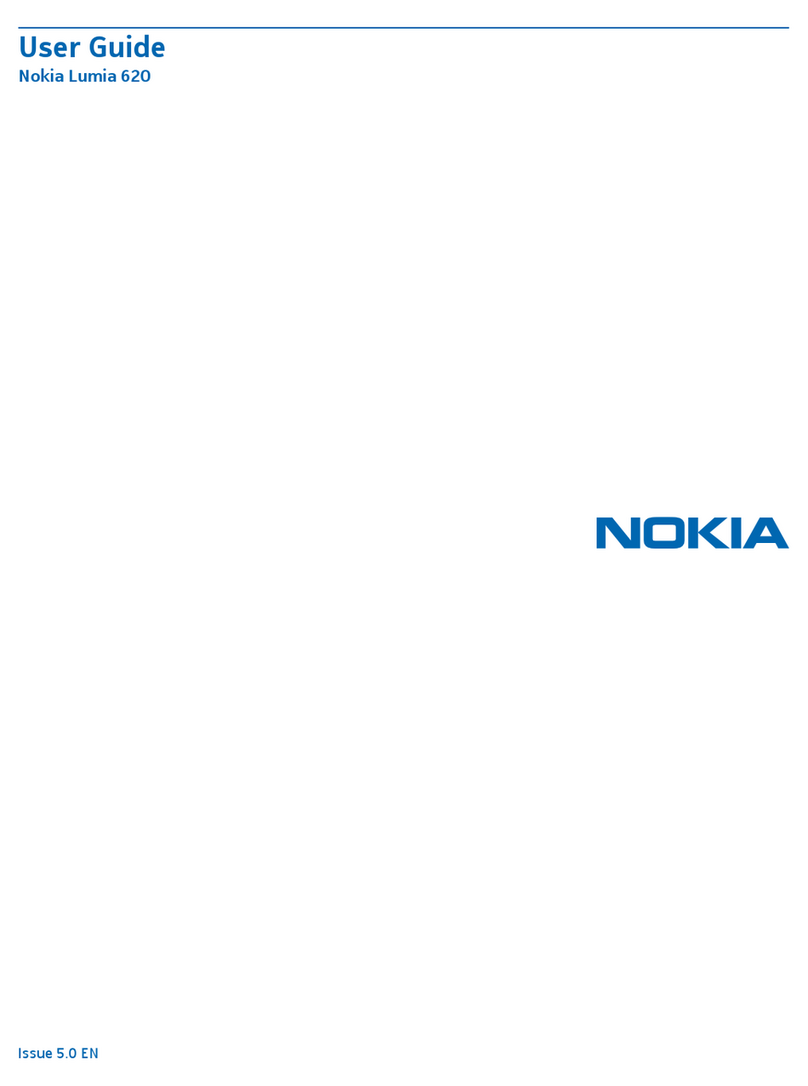
4
Licensed by QUALCOMM Incorporated under
one or more of the following patents:
4,901,307 5,490,165 5,056,109 5,504,773
5,101,501 5,778,338
5,506,865 5,109,390 5,511,073 5,228,054
5,535,239 5,710,784
5,267,261 5,544,196 5,267,262 5,568,483
5,337,338 5,659,569
5,600,754 5,414,796 5,657,420 5,416,797
All other company, product and service names
mentioned herein are trademarks, registered
trademarks or service marks of their respective
owners.
HTC and Google shall not be liable for technical
or editorial errors or omissions contained herein,
nor for incidental or consequential damages
resulting from furnishing this material. The
information is provided“as is” without warranty
of any kind and is subject to change without
notice. HTC and Google also reserves the right to
revise the content of this document at any time
without prior notice.
No part of this document may be reproduced
or transmitted in any form or by any
means, electronic or mechanical, including
photocopying, recording or storing in a retrieval
system, or translated into any language in any
form without prior written permission of HTC
and Google.
